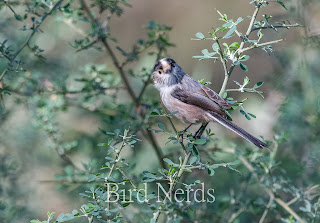Ornithological photo blog dedicated to birds species found mainly along Southern Spain and the Strait of Gibraltar.
15 February 2020
Short-toed Treecreeper
Fairly common but inconspicuous (blends well with bark) in woods, forests,and
gardens with larger trees. Usually seen as singles or pairs, creeping along trunks and
branches using its tail for support, like a mini woodpecker.Propes in crevices for insects
and spiders, and often spirals up then drops to low on the next tree and spirals up again.
In areas where Tree Creepers occurs, the two species are often not safely distinguished without considerable experience .
Long -tailed Tit
This species has a very different appearance to the other tits, and can easily be separated from them by its long, narrow tail, small size and colouration. The general appearance is one of a black and white bird with pink and dusky tones, incredibly acrobatic in nature and with a distinctive shape in flight of a small pale ball followed by a long tail.
In adults, the head is white, with a broad black eye-stripe that extends back down the neck; the upperparts, wings and tail are dark with areas of pink, while the underparts are a dirty white, tinged with pink. Young birds are duller in colouration than adults, the black being replaced by a dark brown and the pink replaced by white. These young birds undergo a complete moult just a few weeks after leaving the nest and so it is impossible to separate them from adults after they have undergone this moult.
Long-tailed Tits are usually seen in extended family parties of 8-20 individuals, and these mobile groups typically give themselves away through their characteristic contact calls. This call is a sharp ‘tsurp’, repeated several times. Once heard, it is easily remembered and often the first indication that a small group of Long-tailed Tits is in the area.
The Long-tailed Tit is found within deciduous woodland, in hedgerows and gardens.
Subscribe to:
Posts (Atom)

































